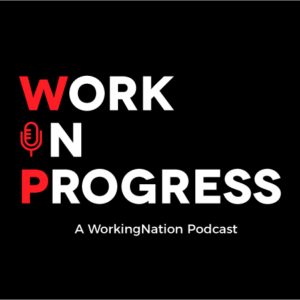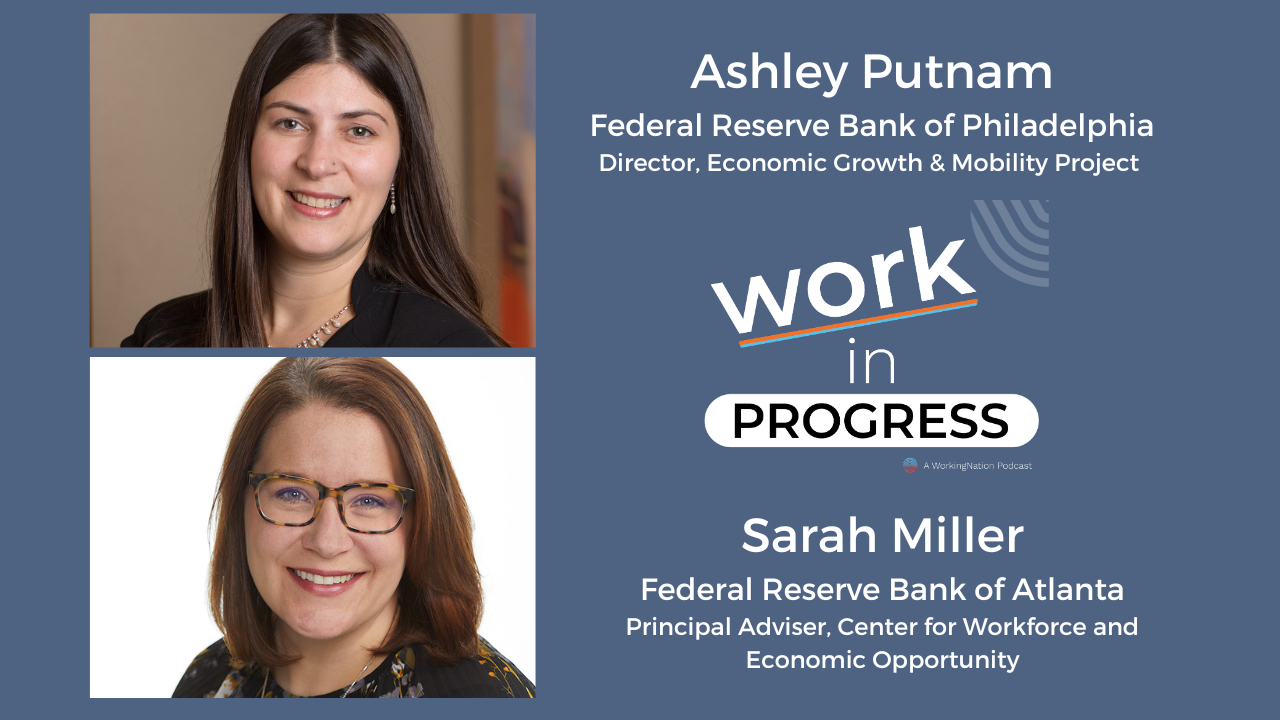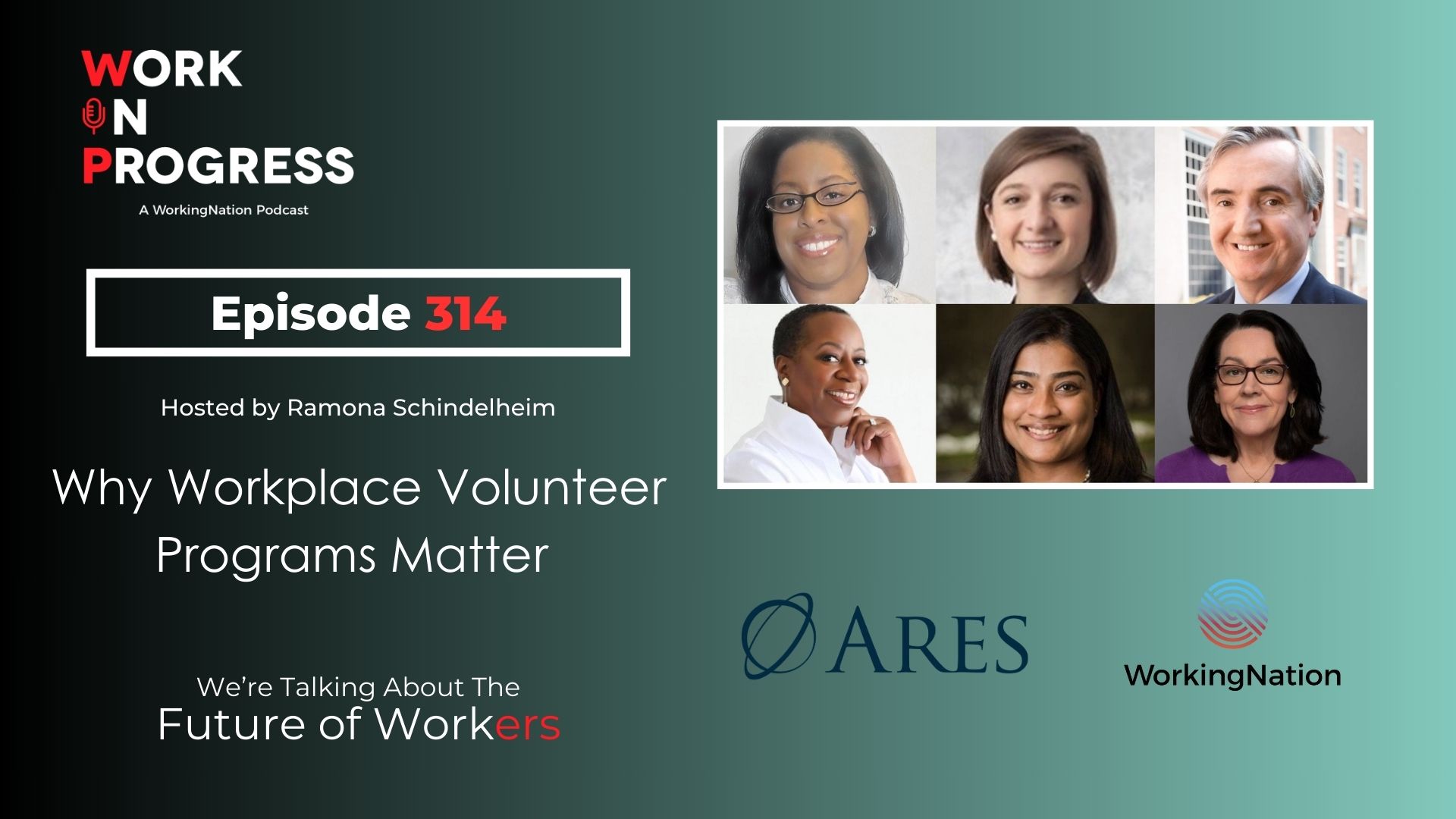Podcast: Play in new window | Download | Embed
Subscribe: Apple Podcasts | Google Podcasts | Spotify | Pandora | Youtube Music | RSS
In this episode of the Work in Progress podcast, a deeper dive into a new report on how the pandemic changed what lower-wage earners expect from a job, what they are doing to improve their economic mobility, and the impact it is having on the workforce today.
One of the tasks of the U.S. Federal Reserve System is to take the pulse of economic conditions to better understand the economic health of the country. Capturing the full picture of today’s labor market means looking beyond the data and understanding the actual experiences of workers and job seekers.
A new report from the Fed – Worker Voices – does just that, providing insight into how job seekers and workers in lower-wage roles navigated the labor market throughout the COVID 19 pandemic – and what they now expect from a job today.
Two of the authors join me in today’s podcast.
Ashley Putnam is director of the Economic Growth & Mobility Project at the Federal Reserve Bank of Philadelphia and Sarah Miller is principal adviser for community and economic development within the Federal Reserve Bank of Atlanta’s Center for Workforce and Economic Opportunity.
Miller says the work on the report started with a conversation she, Putnam, and several other colleagues had two years, during the COVID pandemic. “As you recall, at this time, the labor market was incredibly tight. There were two job openings to every one job seeker. There was quite a bit of discussion in the media around unemployment benefits, stimulus, and just general incentives for workers to work or to not work. And that was a question that we just wanted to ask, especially of a population that doesn’t have a bachelor’s degree, that traditionally has been more vulnerable in the economy.”
Putnam says they decided to ask lower-wage earners about their experience in the labor market since they are historically hit the first and the hardest in times of economic crisis. “We knew that low-wage workers, workers of color, and workers without a four-year college degree tend to occupy the roles that experienced some of the brunt of the initial pandemic layoffs.”
She continues, “And so we were really focused on what we could do to try to talk to those workers directly. We often speak to intermediaries. We look at quantitative data, we understand sort of things from several levels back and we thought, wouldn’t it be interesting to ask the workers themselves, what’s motivating them? Why are they changing jobs at a high rate? Why are they maybe hesitant to go back to some industries?”
Miller, Putnam, and their colleagues at the other Federal Reserve Banks interviewed more than 175 workers in 33 states in a variety of industries – hospitality, food service, customer service, food production, manufacturing, health care and early childcare. Many were in what we called “frontline” or “essential” jobs, jobs that would have brought the economy to a full stop, if not for these workers filling them.
Worker Voices: Key Conclusions
There were a number of key takeaways from those personal conversations:
- Low-wage earners had difficult balance of health and financial concerns.
- A tight labor market hasn’t benefited all workers equally.
- Workers expressed enhanced expectations of job quality.
- Many workers are reinventing themselves through skills development.
We go into great details in the podcast on all of these conclusions, but I do want to highlight some of our conversation around the first one.
While much has been written and spoken about the role of the essential worker, we shouldn’t forget and the difficult dilemma many of these employees found themselves in during the height of the pandemic – risking their physical health or risking their financial health.
“What we found is that they were weighing incredibly complex choices,” says Miller. “They’ve described their experiences as traumatic and scary and shared quite a lot around some really profound questions that they were faced with every single day around whether they worked or whether they didn’t work.”
“All of the barriers that existed prior to the pandemic remained and were exacerbated. Access to child care was widely reported. The reduction in transportation left job accessibility completely out of reach for many workers, depending on where they lived. And a lot of people had to balance some very significant health risks to themselves and to their families.
Putnam adds, “When we talk about why workers did or did not work during the pandemic or were resistant or hesitant to going back to certain industries, we have to consider that it’s not just about, did we get unemployment benefits or stimulus checks? People were weighing really complicated choices, and they knew they needed to put food on the table, but they also didn’t want to put their families at risk.
“Many people made very difficult decisions and spoke about really the mental health impacts, which are not lost on us when we think about what happened to a lot of workers in these frontline jobs throughout the course of the pandemic,” Putnam adds.
The Impact of Federal Stimulus During the Pandemic
And that brings us to the question they asked the workers in the focus group, what was the impact of the federal stimulus payments and extended unemployment benefits on their choice of whether or not to return to the workforce. On the podcast, Miller addresses the question. Putnam concurs with the report’s findings.
“Many workers talked about how they were a welcome support – I would say overwhelmingly so – the ones that did receive it. (But) many did not receive it because of policy issues, timing issues, processing issues,” says Miller.
“Those workers that did receive it did talk about how it offered a smoothing effect for them in a time of great financial instability. What was most important though, and if you recall the national conversation around this, was that we found absolutely that these were not disincentives to work.
“These were not long-term financial resolutions to a problem that created a space that they could think differently about employment. Many of these workers talked about how it was a means to catch up or just to even be able to take a breath. In many cases, for the first time in their working lives to do that.
“So for those that did receive it, it was very welcome. But in no way, shape or form did any of the conversations that we have really reinforce what we heard at a national level, that these were a disincentive to work. They were there to help them basically stay afloat and allow them the space to find better employment in some cases, but absolutely not a disincentive to participate in the labor market.”
Again, we go into much more details on all the conclusions in the podcast, and we talk about what the workforce can do next to address some of the concerns that came out of this volatile period in our economy.”
You can listen here on the website, or you can download it wherever you get your podcasts.
You can also read more about the report here.
NOTE: The views Sarah Miller and Ashley Putnam express are their own and don’t necessarily reflect those of anyone else on the Federal Open Market Committee (FOMC) or within the Federal Reserve System.

Episode 274: Sarah Miller, principal adviser, Federal Reserve Bank of Atlanta’s Center for Workforce and Economic Opportunity; Ashley Putnam, director, Federal Reserve Bank of Philadelphia’s Economic Growth and Mobility Project
Host & Executive Producer: Ramona Schindelheim, Editor-in-Chief, WorkingNation
Producer: Larry Buhl
Executive Producers: Joan Lynch and Melissa Panzer
Theme Music: Composed by Lee Rosevere and licensed under CC by 4
Download the transcript for this podcast here.
You can check out all the other podcasts at this link: Work in Progress podcasts












